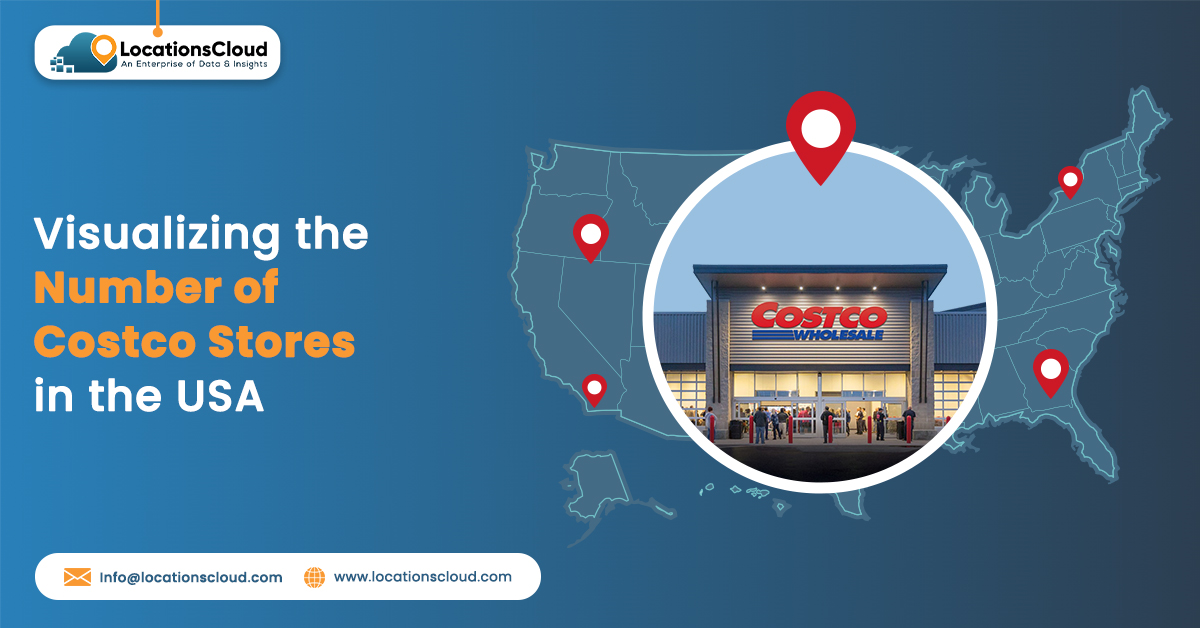
ALDI wants to grow a lot in the US by opening almost 900 new stores and spending $5 billion. They’re doing this to compete better with other grocery stores. Picking the best locations for these new stores is really important for ALDI. They need to choose places where lots of people go to shop.
ALDI is known for selling mostly its own brands, which helps it keep prices down. It also has some well-known brands but at lower prices. This is why many people, especially young ones and those who like to save money like to shop at ALDI. Because so many people like ALDI’s prices, they want to open more stores to reach more customers. Their plan shows they’re serious about growing and offering good deals to shoppers.
ALDI’s Expansion Plans in the US
ALDI intends to expand by adding around 330 shops in the Northeast and Midwest by 2028, therefore strengthening its position in these regions. ALDI also intends to expand throughout the West by opening additional locations in places like Phoenix and Southern California as well as in new towns like Las Vegas.

The ALDI expansion makes a difference in many areas of the local economy. On the other side, the establishment of new stores opens up new job positions that vary from cashiers and store associates to managers, and, therefore, they almost invariably raise the number of employed workers. For two, their collaboration with local suppliers and producers improves vendors and farmers in the community, spurring the economy too. Furthermore, due to the arrival of ALDI Store Locations the competition in the grocery market will increase. This helps consumers to buy their products at a lower price, and get more attractive offerings.
ALDI has strategically enhanced its presence, making its mark in various regions across the country. The supermarket chain’s extensive reach enables it to serve a diverse range of customer segments in urban, suburban, and rural locations. ALDI has expanded widely in the USA, spreading its stores in 39 states and territories. It has an extensive presence in 1,611 cities and with each new store opening, ALDI brings its unique blend of high-quality products at affordable prices to new communities.
Growth of ALDI Stores in the United States
One of America’s fastest-growing supermarkets, ALDI, plans to pass along $100 million in savings through Labor Day by lowering its everyday low pricing on more than 250 products. Due to relentless inflation, these efforts come as customers experience sticker shock at the checkout.

ALDI, one of the grocery shops with the quickest growth rate in the country, has stated that it would establish 800 new locations by the end of 2028, combining new store openings with store conversions. This five-year growth strategy will, at a time when customers are more concerned than ever with saving money, offer fantastic items to even more areas at the lowest costs. The successful completion of ALDI’s acquisition of Southeastern Grocers and the Winn-Dixie and Harvey Supermarket brands is a crucial component of its objectives. It will propel substantial expansion in the Southeast over the coming years.
Over the next five years, ALDI plans to invest over $9 billion in expanding its nationwide presence by opening additional stores. By the end of 2028, ALDI will have added over 330 stores in the Northeast and Midwest as part of its expansion trajectory, further solidifying its already strong position in these regions.
Additionally, ALDI plans to expand its footprint in the West by opening additional locations in Phoenix, Southern California, and other new areas like Las Vegas. About fifty ALDI outlets are expected to start the conversion process in the second part of 2024; most of these stores will reopen as ALDI in 2025.
Region Wise Distribution of Aldi Stores
Now at the time, that is April 9th, 2024, the USA is in fact home to 2,372 ALDI stores that are located in all different parts of the country, which basically means that ALDI has already developed a strong network in all parts of the states. Besides all of the states, Illinois alone has the most prominent number of 217 ALDI units according to the data, which may make up to 9% of the whole number of the ALDI stores all around the country. Through the exaggerated presence of its own stores operating in Illinois, ALDI does not have its population density exclusively but identifies IL as one of the most prospective markets for the supermarket chain.
The leadership of the Illinois state where ALDI stores are the most common underscores the drive of the firm to meet the demands of the many customers. ALDI now plants over 200 stores throughout IL, enshrining in the state its presence and bringing shopping policy high-access and convenience for its residents. This shows the state of Illinois to be a key element to ALDI’s progressive strategy of the company. Its growth in the demand of consumers relative to this region is seen to be the cause of its success in meeting the needs of the customers in this region.

Illinois:
- Illinois is a point where the ALDI warehousing company has the most stores since it has a total outlet count of 217.
- The number 3 store for every 58,396 residents which was calculated implies that ALDI locations are evenly distributed, hence, are able to serve most of their population.
- Accounting for a little more than 9% of ALDI’s total USA stores, Illinois is a critical market area for the Company’s strategy which provides good growth potential.
- The large number of ALDI stores scattered around Illinois nonetheless means that the residents more likely have a shortened distance that they have to travel in order for them to reach a store thus the convenience and accessibility of DIY for the shoppers is improved.
Florida:
- While having a smaller number with 216 stores compared to just 227 stores in Illinois, Florida nevertheless features an overwhelming amount of ALDI.
- Contrarily the population’s density is not very much related to the accessibility ratio, the ratio is almost at 1 store for every 99,435 people.
- However, the state of Florida’s culpability in the %9 of ALDI’s total stores reinforces the business consistencies of the Company serving its customers.
- Despite the difficulties of establishing a store in another state, ALDI’s presence in Florida is robust and that is enough to let residents have access to the supermarket’s products.
Ohio:
- Ohio is, possibly, an ALDI store destination state measuring 160 stores, compared to Illinois and Florida with a total number of stores being 209 and 224, respectively.
- On a per capita rate, it is one point of ALDI for every 73,056 people living in Ohio but the residents have comparatively good access.
- With 7% of the total stores in the USA, Ohio has a slightly less prominent position in the retail outlet, but it still ranks third after Illinois and Florida which represent ALDI’s bigger market area.
- Although ALDI is not an overly represented chain in Ohio in terms of the number of stores per population ratio, it is noteworthy that this grocery chain strives to meet the needs of different communities across the state and take pride in the success of the business.
States and Territories with No Aldi Stores
ALDI is in 33 states and territories in the US, but there are 17 places where they don’t have stores yet. These 17 places might not have ALDI stores because the company hasn’t gotten there yet, or maybe there are already a lot of other stores. Even though they’re not everywhere, ALDI is still in a lot of places and is working to grow more.
These states and territories without any ALDI stores are:
- Guam
- Maine
- New Mexico
- Montana
- U.S. Virgin Islands
- Northern Mariana Islands
- Idaho
- Puerto Rico
- Hawaii
- Alaska
- Nevada
- Utah
- Colorado
- Wyoming
- American Samoa
- Washington
- Oregon
In addition, the lack of ALDI stores in these areas could indicate to some existing consumers that demand might exist in their area among consumers who are familiar with ALDI’s value proposition and would welcome the retailer to expand into their area. In the long run, if Aldi gains more reputation and customers in the United States, it can probably consider expanding to the currently untapped markets and possibly becoming known as well.
ALDI has developed at a fast rate of knots in the U.S. market but has not penetrated 17 states and territories yet. Therefore, due to its trade with few or even without such regions, Aldi’s residents in this area do not experience the advantages of this store’s unique product collection with relatively low prices.
Nevertheless, ALDI’s betting on states or territories where it is not scattered yet could be a chance for later expansion. ALDI is renowned for its strategic methods of expansion; these mainly involve market research and then selecting those places with a sufficient customer base. With a chain of ALDI’s transforming the American market, an expansion to these unserved markets may be one of the projections for the next few years.
Bottom Line
With further development and adaptation into the future marketplace, ALDI’s supermarket will not only see new opportunities but also face brand-new challenges. On the other end, the 17 states and areas without such stores are still to open new channels and thereby expand the market. While Aldi is in a good position currently, the following matters need to be handled:- the growing competition, the shifting consumer inclinations, as well as the changing market dynamics, among others.
ALDI will keep expanding by adopting new ideas and offering different shopping options like updated store layouts, increased product choices, and enhanced digital features. This is what will keep it firmly established as the top low-cost retailer in the United States.
By and large, revealing and exploring the positions of ALDI’s stores offer to the supermarket chain and society many facts about the expansion strategy, market penetration methods, and economic development. Be it utilizing opportunities, overcoming challenges, or responding to changing consumer preferences; the strength of ALDI in the competitive American retail market is its need to adapt to the conditions in the market.



